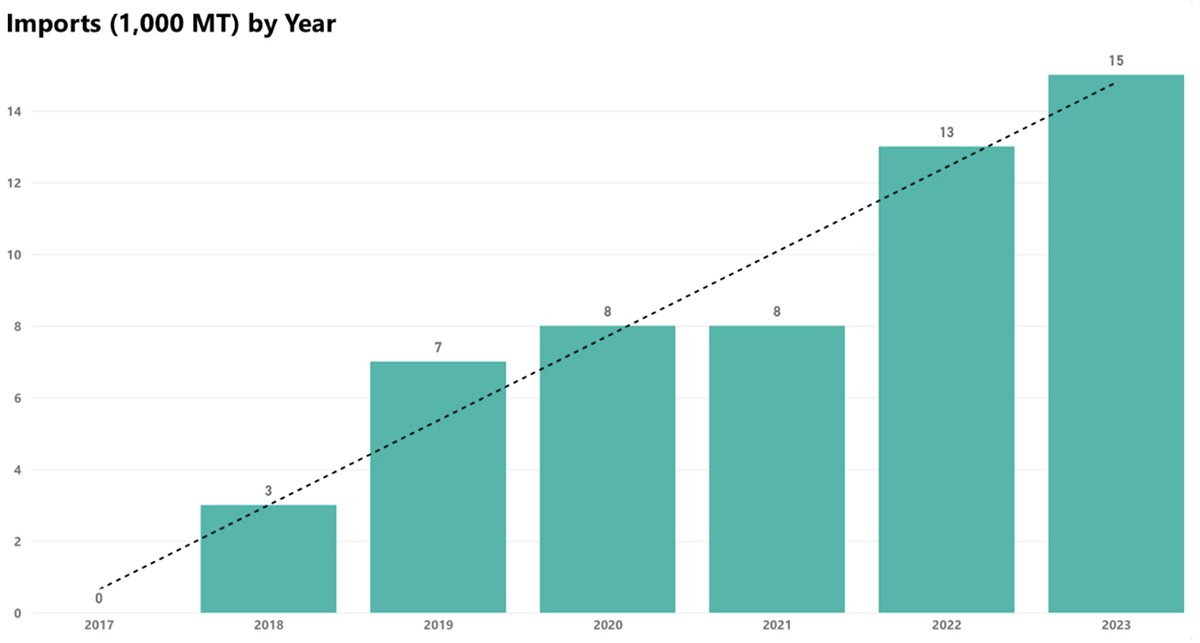February 1, 2024
While production has remained low but stable, Chinese Kabuli chickpea imports have risen five-fold since 2018. Market insiders predict this trend will continue


Exclusive Pulse Atlas data shows China has begun importing significantly more chickpeas over the last five years, with imports five times higher in 2023 than in 2018. Though the size of the internal market remains modest, imports hit a record high 15,000 MT in 2023 and the 6-year upward trend is consistently positive.

Shuke Mao, Owner and Director Manager of Nanjing Bonagro International Trading Co.
Disclaimer: The opinions or views expressed in this publication are those of the authors or quoted persons. They do not purport to reflect the opinions or views of the Global Pulse Confederation or its members.